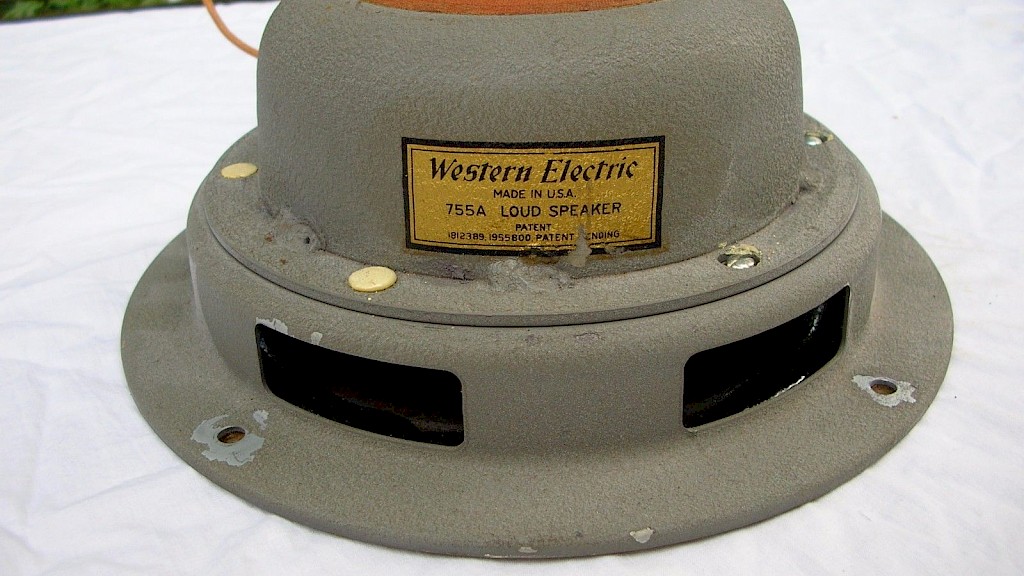Ten Landmark Speakers Worth Collecting
Speaker collecting is like car collecting. You can use only one pair of speakers or one car at a time. But, you can enjoy looking at them, fixing them, thinking about them – that is what collecting is all about.
Here is my list of ten collectible speakers and which characteristic of sound reproduction each embodies. They are all over 30 years old and still sound better than most speakers sold today!
Western Electric 755a (1940’s)
This was a voice speaker developed for the Bell Telephone system to provide intelligible, natural-sounding voices in offices, phone booths and railway platforms. http://vintagehifiexperience.blogspot.com/2006/08/western-electric-755a-fullrange.html
2. Quad ESL 57, 63 (1950’s)
These popular electrostatic loudspeakers (ESLs) were the reference standard for openness and treble extension. The multiple elements were in-time and in-phase. https://en.wikipedia.org/wiki/Quad_Electrostatic_Loudspeaker
3. KLH-9 & Acoustat 1+1 (1950’s)
These Arthur A. Janszen-designed, large electrostatic speakers reproduce the bass that the Quads lacked. J. Gordon Holt said, “This is probably the most nearly perfect loudspeaker we have tested until this time.” Read more at http://www.stereophile.com/content/klh-model-nine-loudspeaker-jgh-october-1968#szeU8eV6jtYlXuhw.99 http://www.tonepublications.com/old-school/acoustat-11-electrostatic-loudspeakers/
4. AR-1 & 3a (1950’s)
Edgar Villchur’s small-boxes-with-great-bass made stereo popular. https://en.wikipedia.org/wiki/Acoustic_Research
5. Altec Voice of the Theaters (1950’s)
Western Electric was forced to divest of its speaker business and Altec was created to produce 755a and develop movie theater sound systems. Many of these were over 10 feet tall and designed to fill large theaters. The ‘small’ model, A-7, was the size of a big refrigerator and became the dominant recording studio monitor. Plus, it could come in a finished cabinet for home use. http://www.ominous-valve.com/altec.html
6. Rogers LS3/5a (1970’s)
These very little speakers were designed by the BBC as monitors for mobile recording vans and small spaces. The design was licensed to several manufactures and tens of thousands were sold. It led the mini-monitor craze. https://en.wikipedia.org/wiki/LS3/5A
7. Ohm A (1970’s)
Lincoln Walsh’s design used a single 18” driver to reproduce the full audio range with perfect 360 degree radiation. The output was naturally in-time and in-phase and could play loudly in most home installations. http://ohmspeaker.com/legacy-products/a/
8. Electro Voice Interface A (1970’s)
The first successful use of Theile vented design gave lots of bass with lower distortion out of an even smaller box than the ARs. www.electrovoice.com/downloadfile.php?i=971383
9. Spica TC-50 (1970’s)
This may be the first computer-designed speaker. It had the woofer and tweeter both in-time and in-phase. They could image like electrostatic or Walsh speakers. John Bau managed to get all this from a small box. http://www.tonepublications.com/old-school/spica-tc-50-loudspeakers/
10. Ohm Walsh 2 (1980’s)
The first model of a second generation of speakers combining the Walsh, Theile and Bau concepts to sound like the original Walshs but in smaller boxes, with easier placement near walls, higher efficiency, higher power handling, lower distortion and a wider Sweet-Sweep – sort of the best of everything. http://ohmspeaker.com/legacy-products/2/
Subscribe to Ohm News & Views to get the latest posts in your inbox
John Strohbeen Author
John Strohbeen was the President and Chief Engineer of Ohm Acoustics from 1978-2023.


